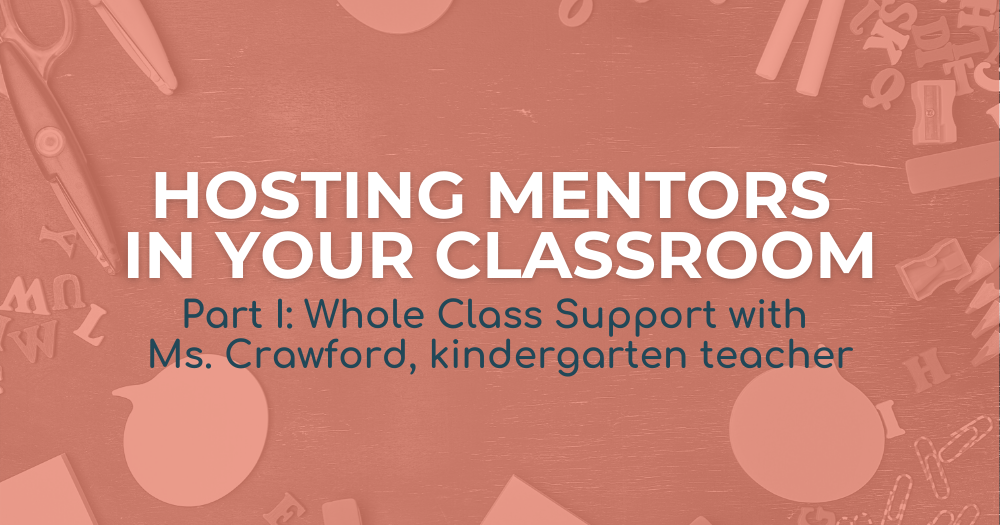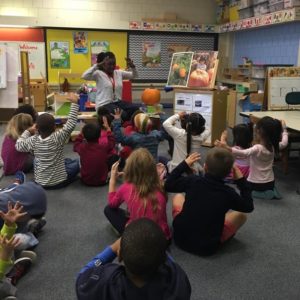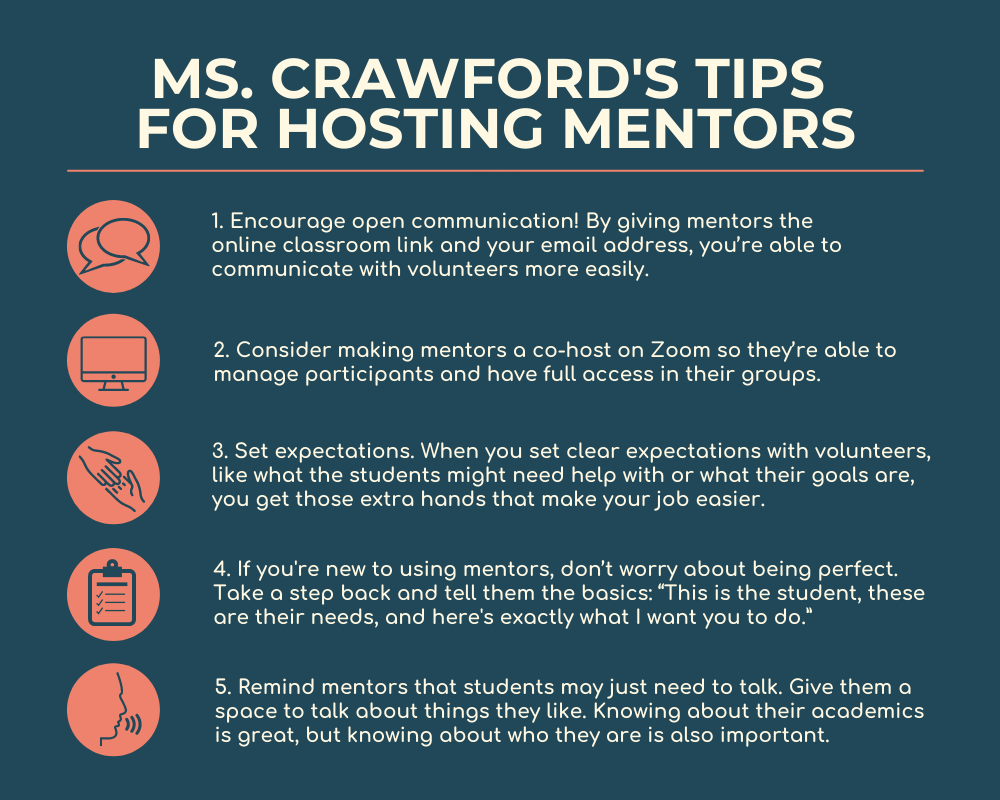
“With a mentor, there’s someone there who is able to hear the things that I can’t. “
Stephanie Crawford is the kind of educator that families reach out to for support – sometimes years after their students have been in her classroom. She likes it that way. “I’m very connected to my students,” explains Ms. Crawford, a kindergarten teacher at the Josiah Quincy School. “There are students in 5th grade whose parents still ask me questions.”
As a self-described “hands-on educator,” Ms. Crawford was intent on keeping those connections strong despite the physical distance this school year. One of her biggest concerns entering the year was that she wouldn’t be able to access her students in the ways she normally would.
To ensure her students would receive the individual attention she prides herself on providing, Ms. Crawford enlisted the help of academic mentors in her online classroom. As a teacher who has used in-class mentors before, she decided to invite several BPIE mentors to join her class, multiple days a week. With a few extra sets of hands, Ms. Crawford has been able to continue supporting both students and their families remotely.
“For the past few years, I’ve really liked having Boston Partners mentors in my class, so that was the first thing I thought of when I logged on and saw all these kids, all twenty-two students on my screen,” says Ms. Crawford.
 There are many ways that Ms. Crawford uses BPIE mentors in her classroom, but it starts with trying to emulate in-class support. “We still model the online classroom like in-person. It’s good for consistency,” she says. One mentor joins her class for Science on Mondays, another volunteers during Dramatic Play on Thursdays, and a third mentors students who need extra support with Math. Ms. Crawford gives Seesaw access to one mentor specifically so they can access the classwork and review with the students.
There are many ways that Ms. Crawford uses BPIE mentors in her classroom, but it starts with trying to emulate in-class support. “We still model the online classroom like in-person. It’s good for consistency,” she says. One mentor joins her class for Science on Mondays, another volunteers during Dramatic Play on Thursdays, and a third mentors students who need extra support with Math. Ms. Crawford gives Seesaw access to one mentor specifically so they can access the classwork and review with the students.
Remote learning with kindergarteners can be challenging, and Ms. Crawford worried about the students who might disengage. She knows that many students used the physical classroom to expel their energy in order to remain focused. “I have a paraprofessional in the class – most teachers don’t – and I still needed more hands,” explains Ms. Crawford.
One solution was to utilize mentors in breakout rooms or “centers” for Dramatic Play, which allows students to assign and accept roles, and then act them out. Dramatic Play is a time when students pretend to be someone or something different from themselves. It’s productive for students who need to burn energy and a safe place for students who are shy or withdrawn to speak up and participate in a group activity. It’s also productive for Ms. Crawford, who can’t be in every breakout room at once.
“As a teacher you feel like you’re sending kids into breakout rooms by themselves – you feel like you may lose them, but it eases my mind to know that they’re in there with someone.”
With in-person learning, Ms. Crawford used to be able to have side conversations and small moments with her students. Now, she relies on volunteers to be an extra set of eyes and ears.
“I can’t listen to their stories the way I used to when they’d come into class in the morning or the things they’d tell me when I’m walking around the class. Now, there is someone there who is able to hear the things that I can’t. ”
Most importantly, though, Ms. Crawford believes mentors help the students in her class who need it most. She finds that the students who are behind in certain areas really need more social interaction. “That’s how they learn – by giving them a space to have someone to talk to about the things they like.” When mentors participate in breakout rooms, they can give students the personal attention that’s in short supply in many online classrooms.
For a shareable infographic of tips for using mentors in the classroom, click here.
For teachers who may be hesitant to invite volunteers into their classrooms, Ms. Crawford provides perspective. “I already have a lot to do, but the mentors are not a lot of work.” She knows that teachers might view another person in their classroom as a potential distraction or invasion, but she finds that the opposite is true.“When you set clear expectations with the volunteer, it makes your job easier with those extra hands in the classroom.”
At the end of the day, Ms. Crawford feels relieved knowing that she’s not doing it alone, that her students are supported by the community, too. “There so much our students want to show us and tell us. When they go into those breakout rooms with mentors, I’m glad they are able to talk to someone.”
If you’re a BPS teacher interested in having mentors join your classrooms, here are some tips from Ms. Crawford:

